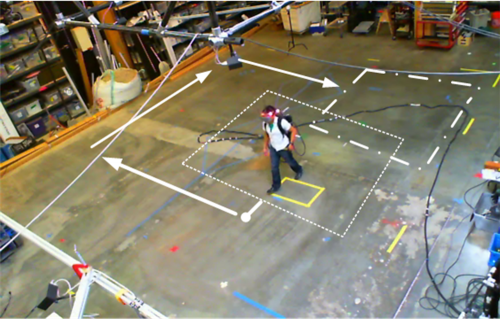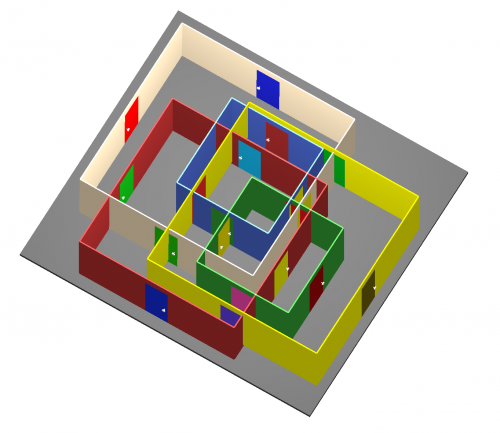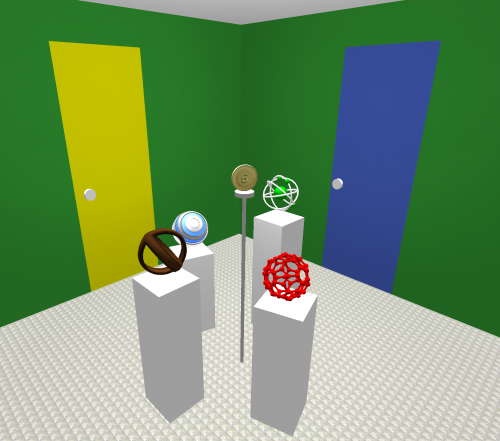April 12, 2013 report
VR team presents infinite walking in virtual environments (w/ video)

(Phys.org) —Virtual reality experiences through the lenses and screens of future smart devices will keep on coming at us. Now a team of researchers from Vienna and the U.S. believe they have a stepped-up technology to support the intensive virtual environment apps of the future. VR designers will be interested in their paper, "Flexible Spaces: Dynamic Layout Generation for Infinite Walking in Virtual Environments," which deals with their idea of walking in the virtual world. Rather than placing the user in a virtual layout that remains constant, the researchers set a goal toward more flexible spaces–described as infinite real walking in virtual environments. Rather than being hurtled through an endless maze that can frazzle the user's nerves, however, the maze is navigable.
When the wearer moves forward, the VR system's computer provides new hallways and rooms. The corridors and rooms are generated automatically as the walker moves to always fit inside the real space available. Their technique involves "procedural layout generation." Designers benefit in that they will be able to focus on content of the virtual world they have in mind, "independent of the implementation details imposed by real walking." This can make spatial manipulation techniques more practical for use in a variety of application domains.
How does it work? Basically, their system tracks the head and body movements of a person wearing a special headset, then steers them through an infinite set of virtual spaces when, in effect, they're just walking around in a circle.
For testing, the researchers used a head-mounted display with 150° horizontal and 88° vertical field-of-view. They used a PhaseSpace Impulse Motion Capture System with 52 high-resolution cameras mounted throughout a 9.14m x 9.14m area. Seven active LED markers attached to the display allowed capture of the participant's head movements. They said that the test environment ran on a dual Intel Core i7 2.93 GHz PC running Windows 7, 6Gb of RAM, and a NVIDIA GTX 570 graphics card.

The team behind this system, authors of the paper, are Khrystyna Vasylevska and Hannes Kaufmann, Vienna University of Technology, along with project partners, Mark Bolas and Evan. Suma of the University of Southern California Institute for Creative Technologies. (Kaufmann is an associate professor for virtual reality at the Vienna University of Technology.)
The system was presented at the IEEE Virtual Reality conference in March.

Applications in mind include virtual museum visits, virtual sightseeing, and explorations of any other kinds of walks through larger virtual worlds. The paper's authors said that "This method is especially useful for VEs [virtual environments] where the content and experience of the environment is more important than the specific spatial layout, such as virtual museums, cybertherapy, entertainment, virtual sightseeing, exploration of fictional environments, and many more."
More information: www.ims.tuwien.ac.at/projects/flexible-spaces
© 2013 Phys.org


















